- Brean – General
- Brean Down Harbour Project.
- Brean Down Fort.
- Brean Sands Holiday Resort
- BREAN
From Tucker’s Farm by the entrance to the beach at Brean, to Brean Down, the road was at one time privately owned and gated. Until the 1960’s a toll had to be paid to gain access to Brean Down and the ferry (cyclists could go free if they walked.). Landowners later discovered that charging for parking was more lucrative that charging a road toll (information from notes by Walter Strickland).
During the early years of the 20th century, prior to the development of the holiday business Brean was a small and isolated community. The roads were unmade, there were only a few houses and the dunes were untouched.
Mr Harry Hobbs remembered pre WWII times: “Every morning Dad used to check the wind direction and if it was blowing from the north west we would hurry off to the beach, for that was the wind which caused bad weather in the channel. Any ships that were in trouble would often cut away their deck cargo and some fine timber would come in with the tide. Dad and I would gather up the planks and later he would sell these to local farmers. It was very difficult to make a living then. If you didn’t work on a farm you had to earn a few shillings doing any odd job you could find.. I remember how frustrated I was as a young man because there were no proper jobs, entertainment or even transport. When I was a boy, if we wanted bread or meat I had to walk to the small shops in Berrow. When I was about 16 I was paid 5s a week to carry two gallons of milk every day up to the little cafe on top of Brean Down [situated in the old fort]. It was run then by a Mr Meredith and it was a long climb pushing an old bike on which the milk cans were tied. I used to get a glass of lemonade at the end of each trip.”
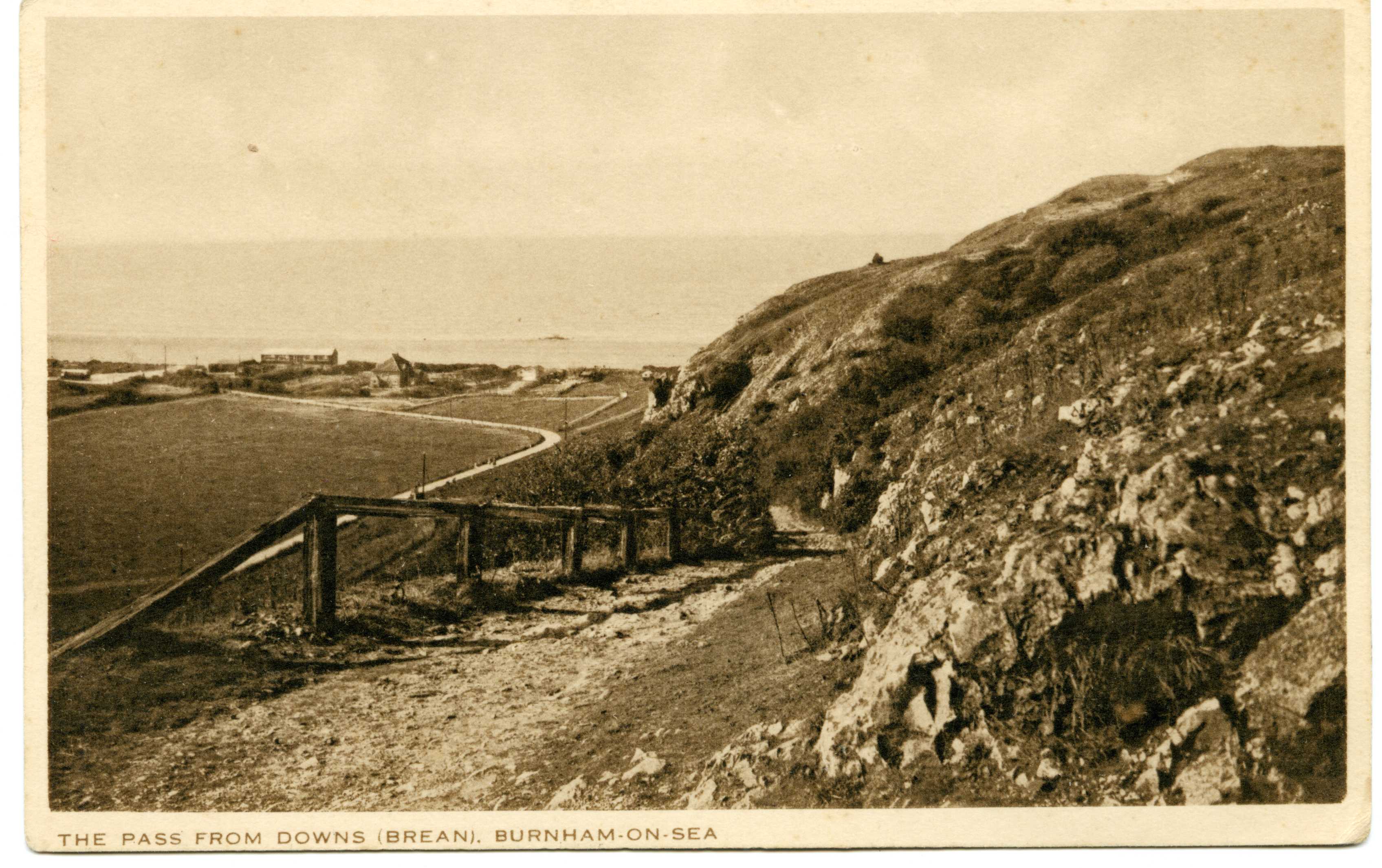
Mr Stuart Hicks, whose family dates back to the eighteenth century in Brean also remembered the 1930s, when Brean first began to develop as a holiday centre: “In those times farmers were literally struggling to make a bare living. My father decided to offer holidays on our land because we could then sell the visitors all our produce, like milk, eggs, cheese and vegetables. At first we hired bell tents from Bristol and let them out at 15s a week. We also used old bus bodies, because there were no real caravans then,, but I was very glad when they went because they were very unsightly. Of course Brean was very different then. I used to go up on the dunes every night and catch 40 or 50 rabbits using a lamp and ferrets. My father was the first to plant buckthorn on the dunes to stop erosion and he would often turn out me and my two brothers, Morley and Seymore, to do some planting.”
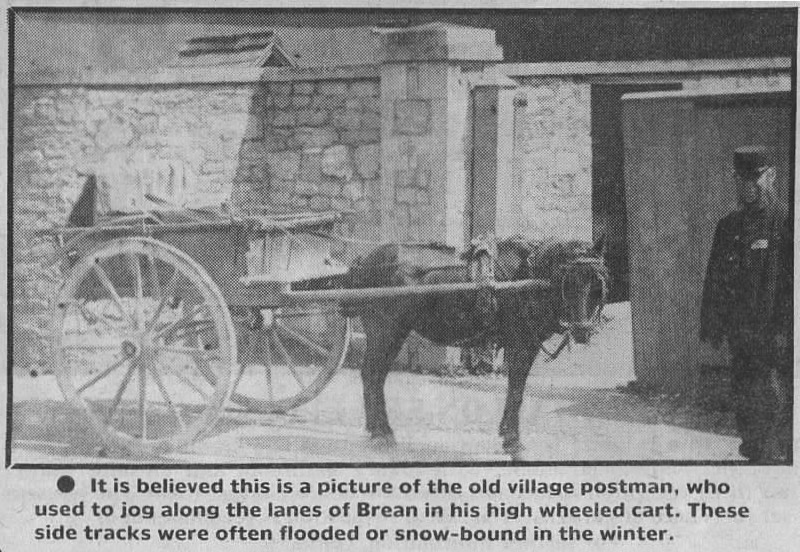
(Recollections above told to Ivor Punnett – Burnham & Highbridge Weekly News 1992).
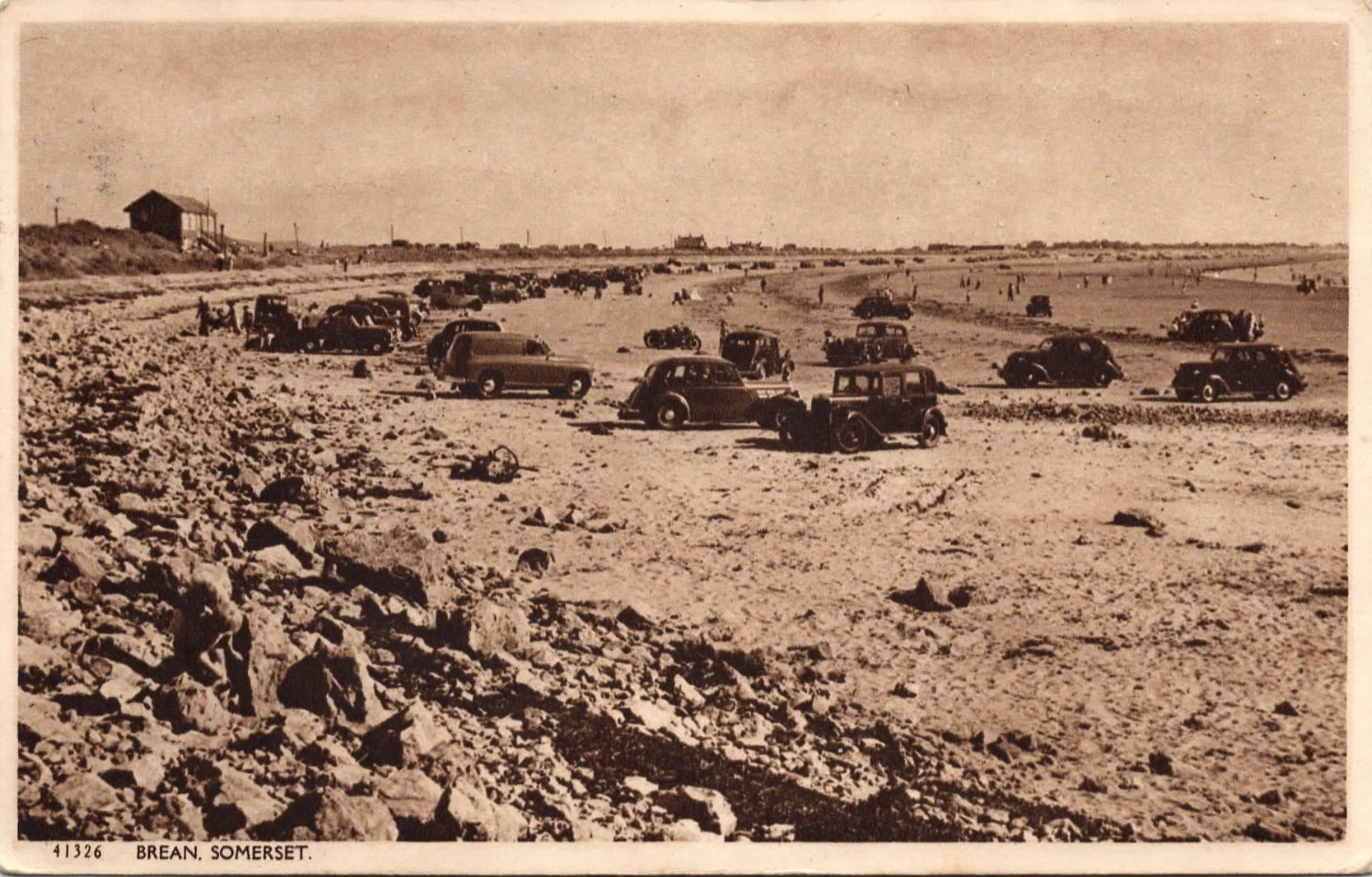
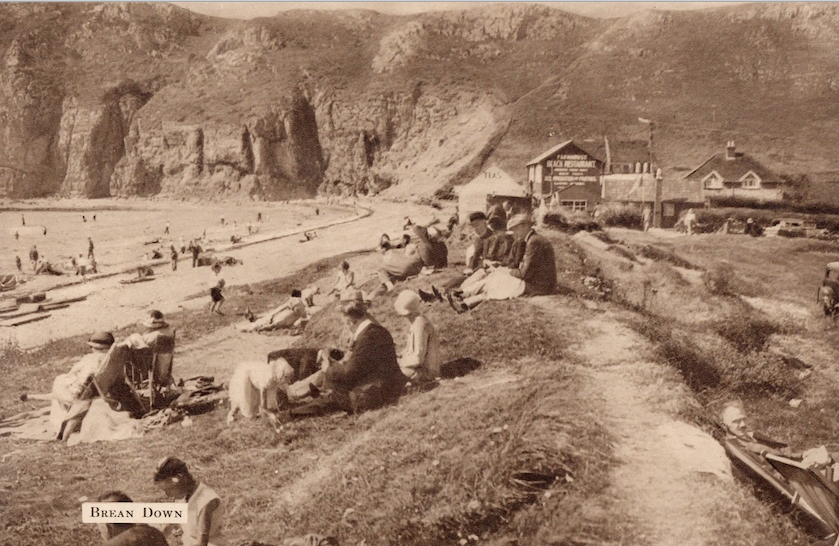
Ernest Hawkings recalls:
Brean Down
Ernest Hawkings of Brean Down Farm recalled for the National Trust in 1978 that there were few visitors to Brean Down before the Great War but that this changed after the Royal Society for the Protection of Birds took over in 1913. He recalled “My sister used to give cream trees as a sideline for them. We sold old prints and view cards.My brother and I had the rabbits on the Down for our pocket money, but we had these poachers from Weston, they obviously caused many problems.”
Ernest was 14 at the time the family took up Brean Down farm and on leaving school he became a shepherd on the Down.
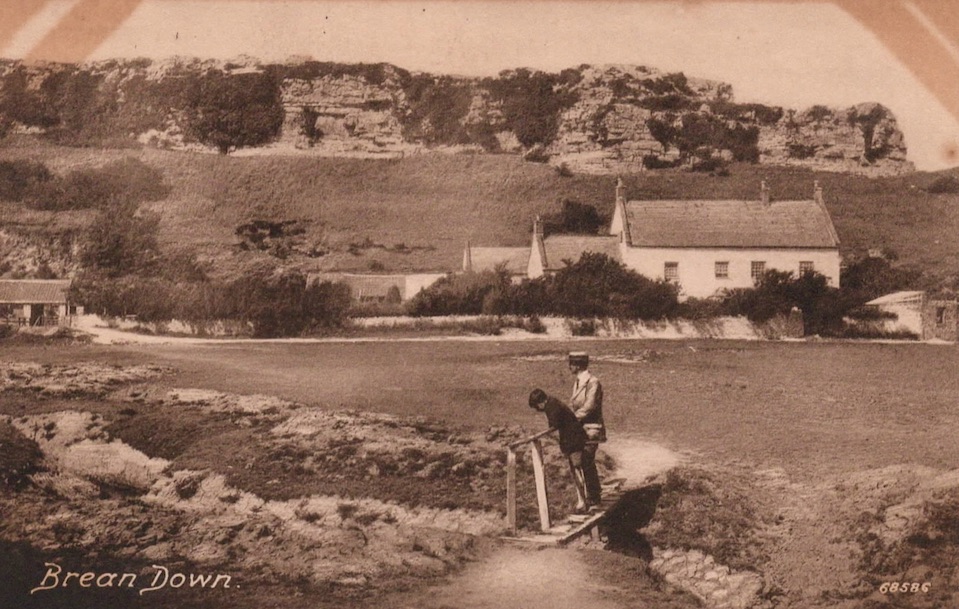
Uphill Ferry
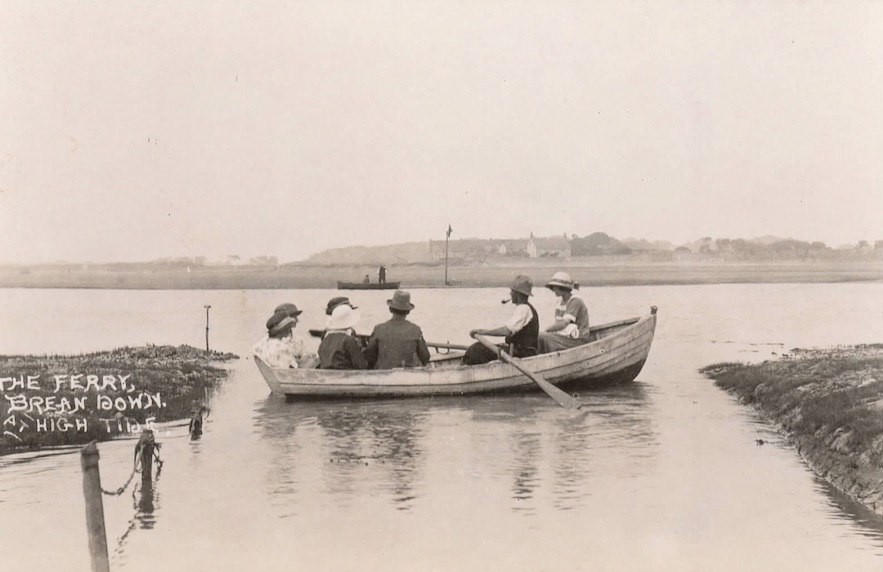
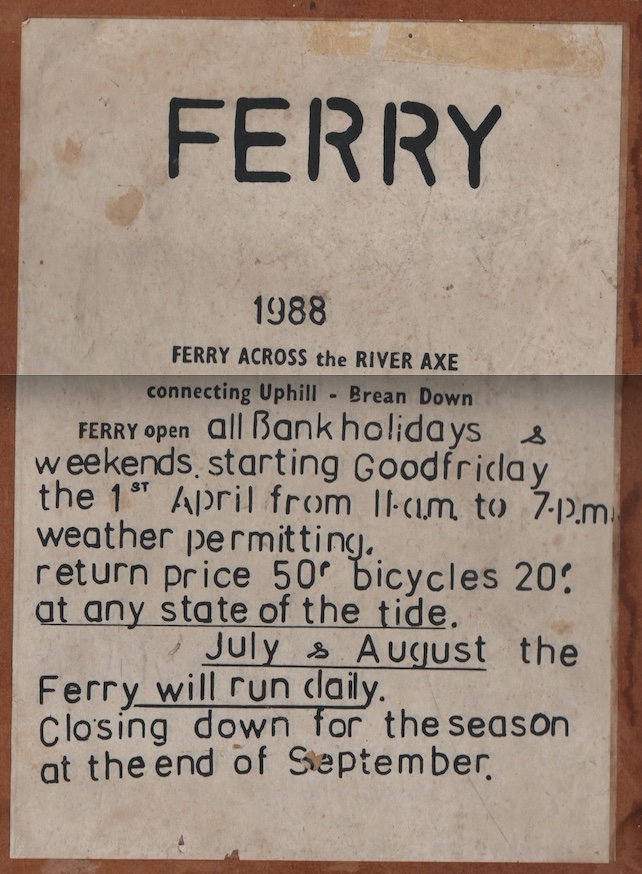
Ernest Hawkings recalls that the Ferry “was very popular. It crossed the Axe above the farm, by the sewer of all places! Nobody complained, all the Weston sewage coming out of there all the time. When it was low water, they used to lash three boats together and put some planking across and you could walk across it at 3d a head, normally it was 6d. We used to have a visitors book for people who had teas and they used to write all sorts of things in it. This one always sticks out in my memory – ‘Lovely garden, gripping tea, dear old boatman, great big fee!’….”
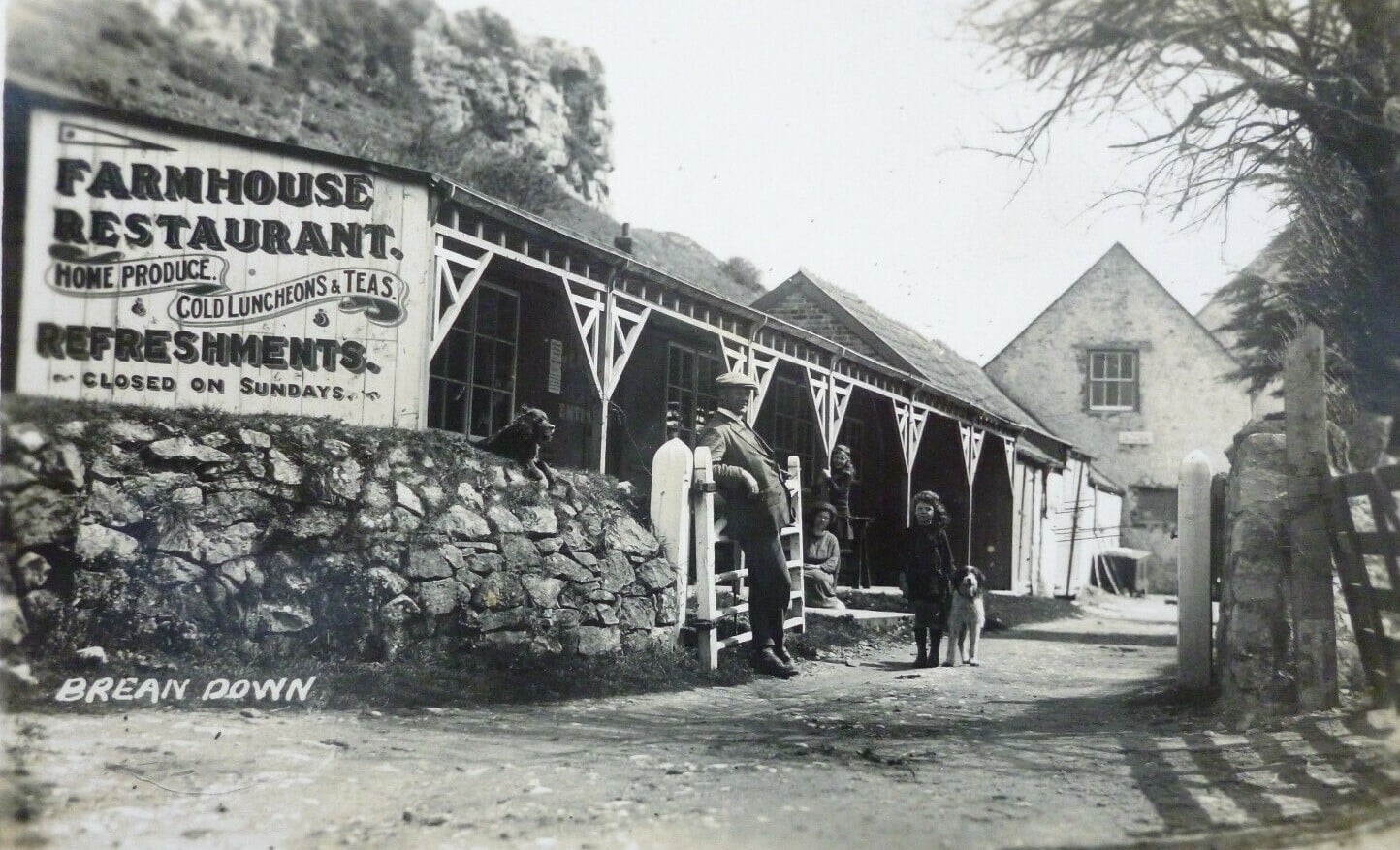
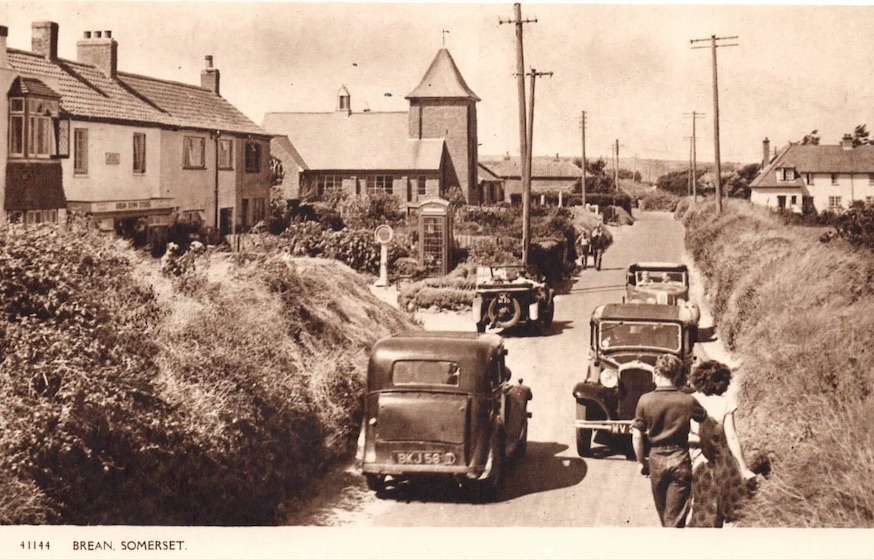
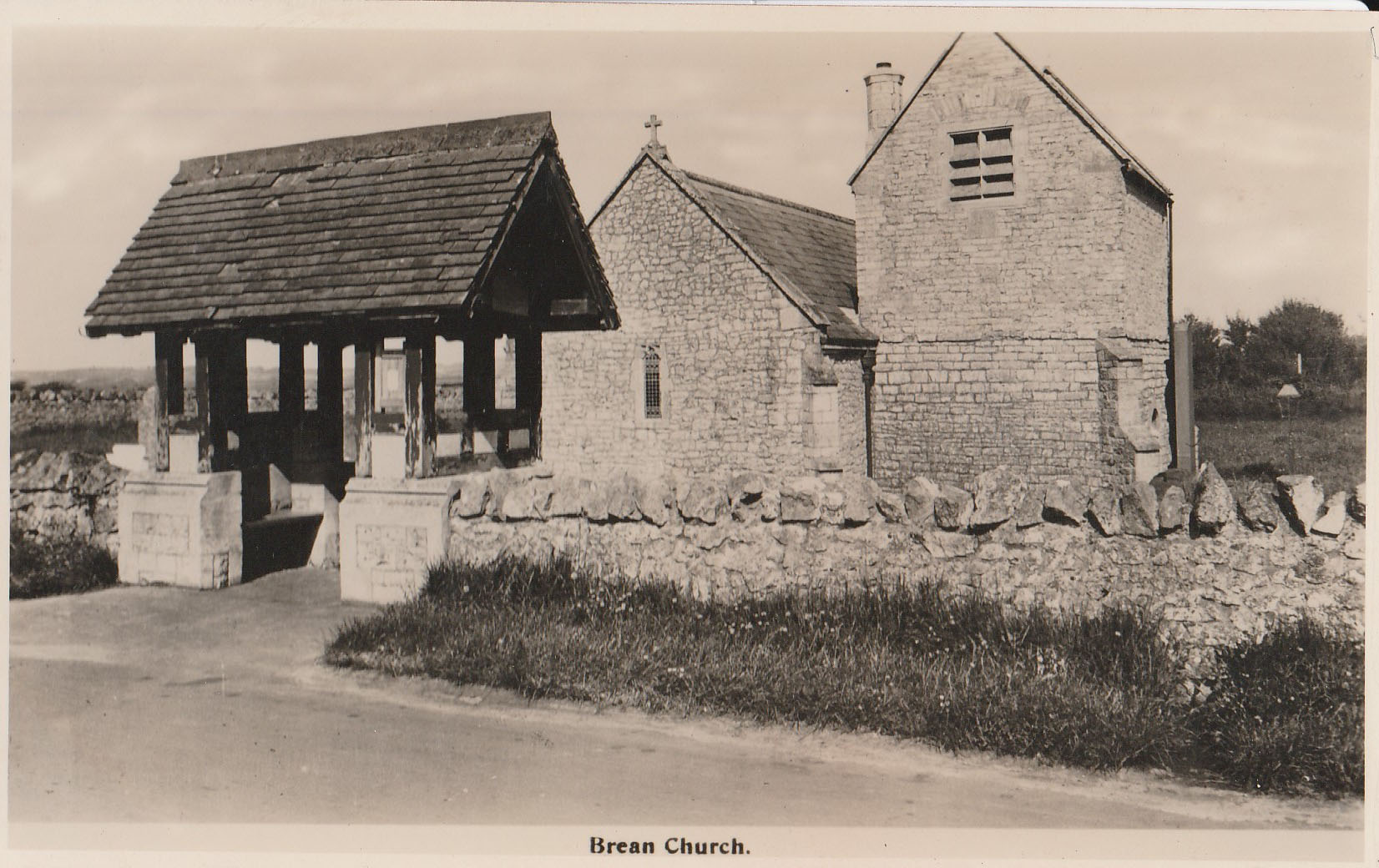
Incidents of people or animals falling over the edge of the down have not been uncommon on the down over the years. For example:
Whilst a party of young people were having a days outing on the high coast cliffs at Brean Down between Weston Super Mare and Burnham, an eight-year-old girl named Gwennie Millard of Highbridge slipped and fell down the cliff side. Fortunately, her fall was broken and she clung on in a precarious position to the cliff edge. With great promptitude, a lad named Charles Fear, aged 18 and with the party, descended the cliff by a rough pathway and creeping along the ledge ( he had to lay down almost flat to get to the place) he caught hold of the girl. The top was reached after an exciting journey and at one point they had to cling to a tree on the cliffside. The spot where the incident took place is little frequented by visitors. Fear who lives in Highbridge is an organ blower at the parish church and a caddie on Burnham and Berrow Golf Links. – This week in the news – Somerset news stories from the past 250 years – Issue #80
In 1926 Charles married a welsh woman , Rose Gullis, and worked at the Apex Tile Company.
Brean Down Aerodrome
The Burnham Gazette of 1919 ran a number of reports about this venture. In July of that year an application was made to run an aerodrome ; in September it was reported that negotiations were still ongoing; by October pleasure flights were being offered at 10s 6d and at 21s. Very expensive for the time. The venture was run by the Warwick Aviation Company and was still being reported on in 1923.
2. BREAN DOWN HARBOUR PROJECT
Several attempts have been made, since 1854, to develop improved deep water docking arrangements near the river Axe. It is recorded in the Weston Mercury of 31 May 1902 that in 1841 the port of Uphill was dealing with 16,413 tons of Welsh coal with a further 456,707 tons sent to other Bristol Channel Ports.
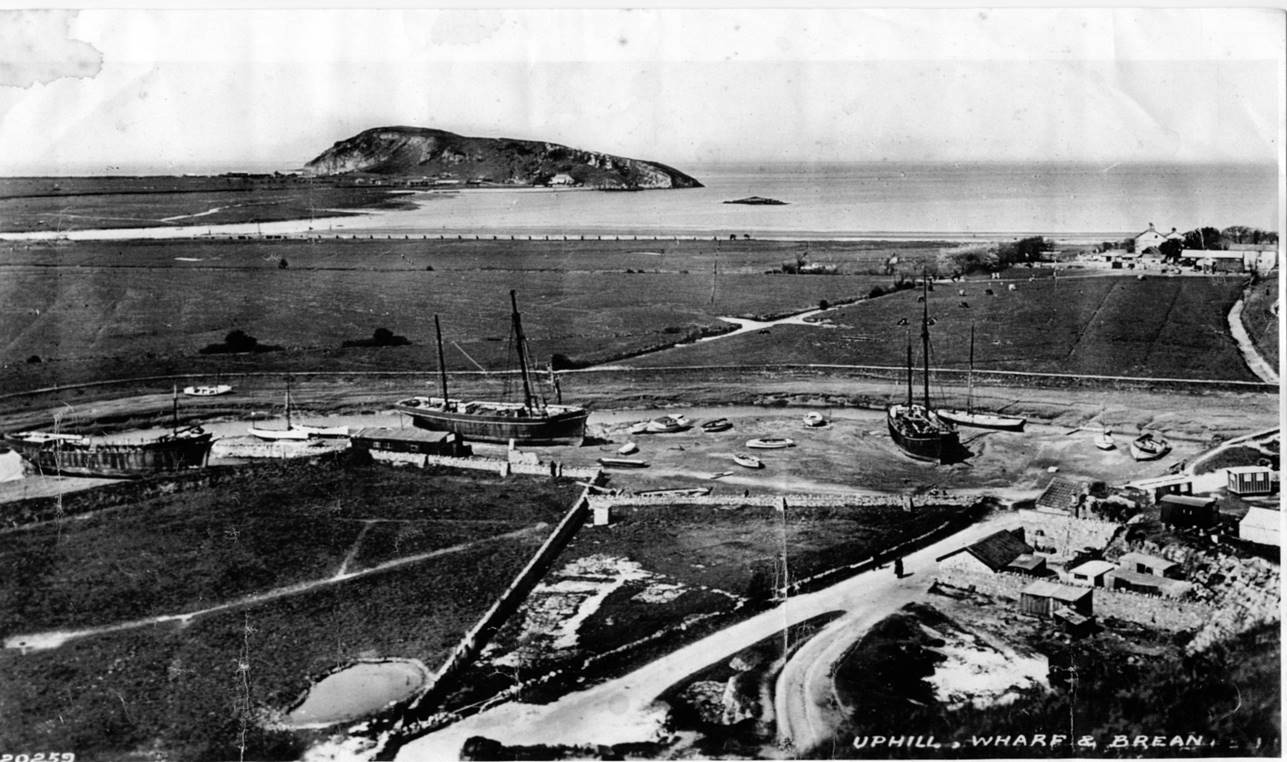
The initial scheme proposed new docks at the mouth of the river Axe at Uphill. This would include rail connections to the Bristol and Exeter Railway at Bleadon, with the aim of transporting coal to Southampton where there was great demand from the new ocean steamers. The Weston Super Mare, Pier, Steam Ferry and Railway Company appear to have been behind this scheme, and for a time there were two schemes, with a second one by the Brean Down Harbour Company also underway. The newspaper reports below do not generally state which company is concerned so this remains unclear.
The following are extracts from the Weston Mercury:
16th September 1854 there was a large meeting of the Weston Super Mare, Pier, Steam Ferry and Railway Company. The gentlemen inspected the temporary works at Uphill (for a float landing plate with reception room for passengers and a hydraulic crane) resulting in the company being formed and three directors appointed. The company’s arrangements for a regular packet are [not?] yet matured; meanwhile a ship is open to passengers at 1d per person. For the present it is intended to run omnibuses to Weston and hence to the Bristol & Exeter Railway where passengers from Cardiff can make a day return to London with 5 or 6 hours in London.
20th October 1858 – the scheme is still in progress. There will be a steam ferry from Cardiff to an all-state-of-tide pier at Brean Down and a railway running up to the south side of the Axe either joining the Bristol & Exeter Railway or running itself to Highbridge and hence to Southampton. Coal traffic will be the most important and vessels will be arranged so that loaded wagons will run onto shipboard rails at Cardiff and off again onto rails at Brean. The commercial part of the scheme – to have a floating dock at Uphill, of 100 yds and an entrance of 60 yds in width to accommodate the largest of vessels. This is proposed to connect with the new station of the Bristol & Exeter Line, now in course of erection, by a short line running at the back of Ellenborough Crescent. The estimated cost of these works is £35,000.
26th October 1861. A full account by Mr Coode, the Chief Engineer to the Weston Bay & Pier Company proposed to form the harbour and to obtain the necessary shelter by the construction of a pier from 300 to 850 ft. in length, run off from a point about 100 yds from the west end of Brean Down and designed so a length of about 800 ft. will afford quayage from 19 to 25 ft. at mean low water. The railway would be from the outer end of the Landing Pier and run along the north side of Brean Down, until within about 600 yds. of the eastern end where the line would pass to the south side via a short tunnel of 200 yds. length. The cost of the harbour and a single line is estimated at £105,000.
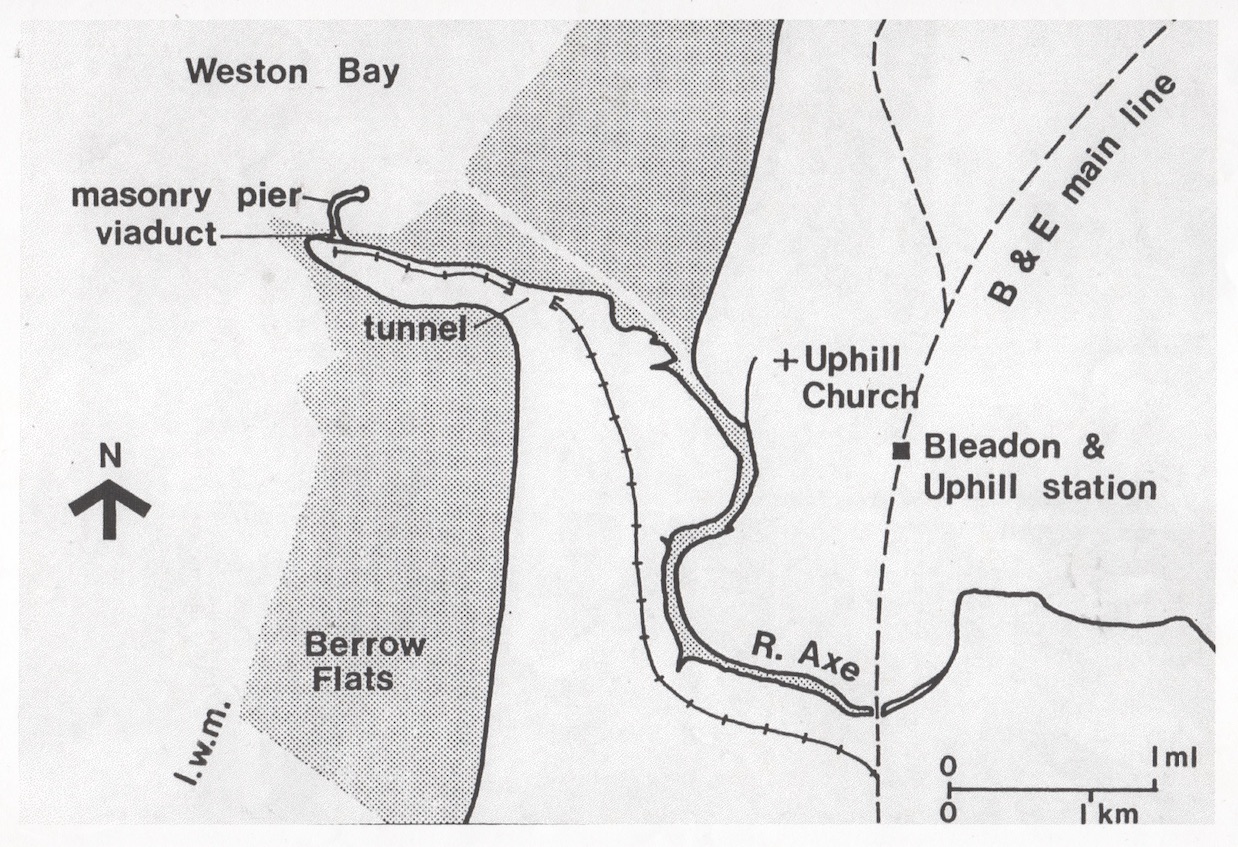
7th December 1861 – the Brean Down Harbour scheme has been duly registered in compliance with the standing orders of the House of Commons.
21st December 1861 – in order to avoid expensive and useless parliamentary contest that part of the BDHco scheme which comprised a landing slip at Birnbeck has been withdrawn from the Bill upon the distinct understanding that the Weston Super Mare, Pier, Steam Ferry and Railway Company are prosecuted in the ensuring session of parliament and also that the Harbour at Brean Down is not to be opposed by the Company representing the interests of the Lord of the Manor of W.S.M.
22nd February 1862 – a petition is being organised to the House of Commons from the inhabitants of the town of W.S.M. in firm support of the Brean Down Harbour scheme. As well as the previous coal and agriculture produce exchanges there is mention of the possibility of a new mineral exploration on Mendip resulting from the opening of the new harbour.
8th March 1862 – the Brean Harbour Scheme is daily securing fresh support and is progressing very favourably. The death was announced of Mr William Wyndham, the proprietor of Brean Down, who was much interested in the proposed pier and harbour scheme.
10th May 1862 – at the meeting on the Wells and W.S.M Railway support was expressed by Wilmot on behalf of the Brean Harbour Co.
24th May – the Brean Harbour Scheme having now surmounted all its preliminary difficulties and secured its capital, it only remains for its supporters to carry out the projected works, and Weston will be in the vicinity of a harbour, second scarcely to any in the kingdom in point of utility.
2nd August 1862. Brean Harbour Scheme invites applications for shares.
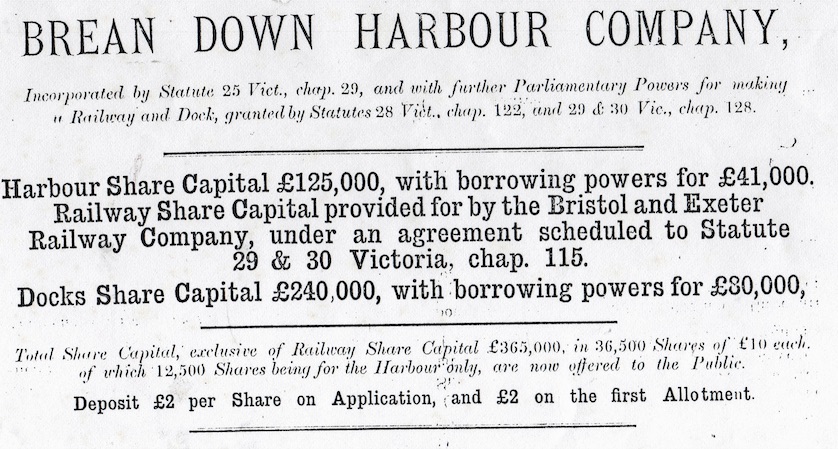
1 October 1864 – Mr Newton, the great contractor of London, has now undertaken the contract for the Brean Down Harbour works. The company Messer’s Lomas and Hay are applying for additional powers to conduct two or three short lines of railway to the main line. On7th October the contract for the works was sealed for £86,000 and work is to commence forthwith and be completed by 1868.
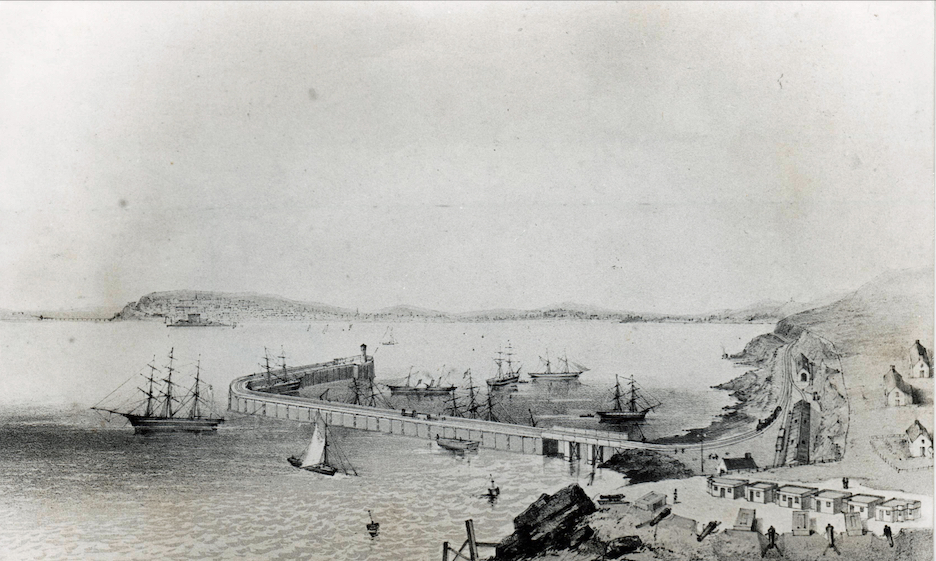
Saturday 5th November 1864. The steamer Wye conveyed the official party of 200 visitors from Knighstone to the site of the harbour. The foundation stone inscribed with the words ‘’ Brean Down Harbour’’ was raised by crane and Lady Eardley Wilmot delivered this address. ‘Here we find a vast promontory extending far into the sea, well sheltered from the gales prevalent in this area and with capabilities for a deep -water harbour at comparatively trifling cost. On The ground in front of us Her Majesties Government propose to erect a powerful battery of military with corresponding works at Steep Holm and Flat holm. May stone upon stone be placed at the bottom of the great deep without injury from storm and tempest until the port of Brean Down appears above the waves in its full symmetry and strength capable of accommodating the largest of vessels and being an emporium of commerce from every quarter of the globe.’ Following this address the stone was lowered with a buoy attached and bearing a small flag. The first blasting of the rock to be removed was made from the northern side of the Down followed by another before the boat returned to Anchor Head. At 2 o’clock the most elegant and sumptuous banquet ever was provided in Weston’s Town Hall by the Brean Down Harbour Company. The celebrations ended with fireworks on Roger’s field (the site of the Winter Gardens) and a bonfire on the beach.
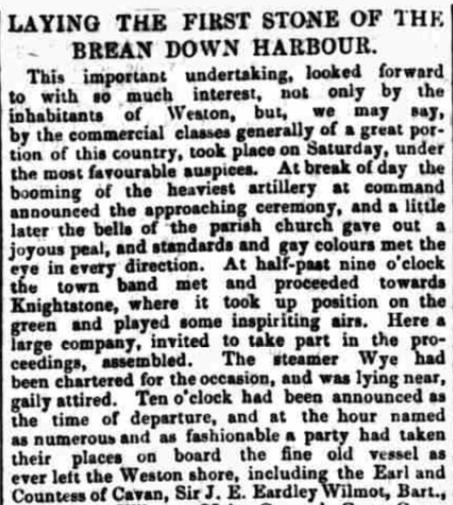
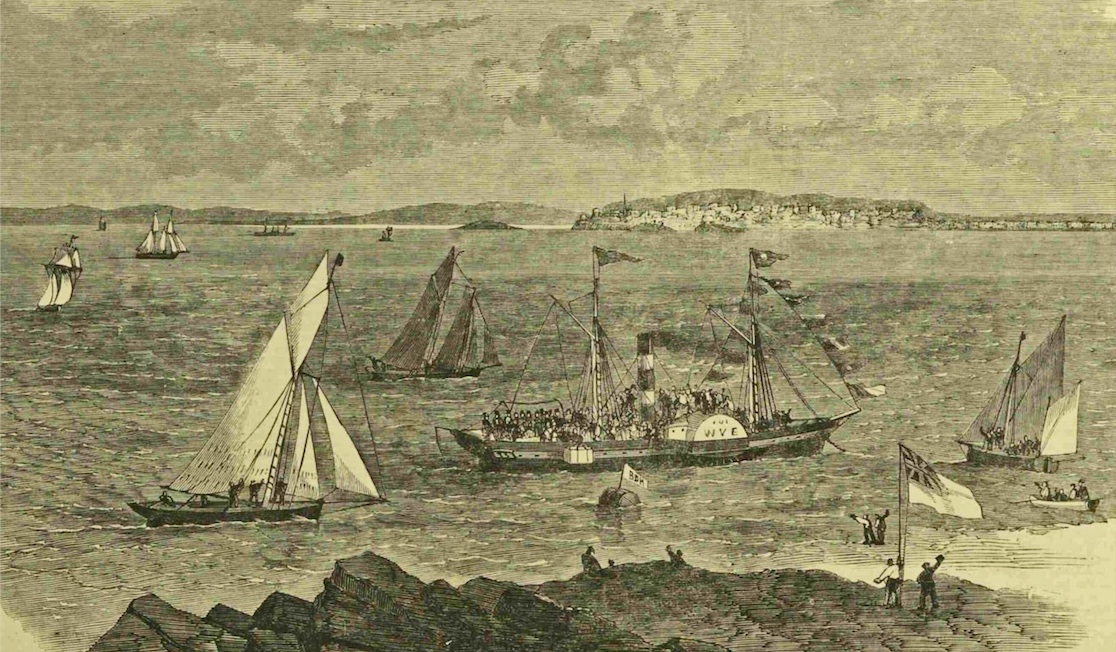
By the next morning the foundation stone had disappeared. The buoy had proven a little too buoyant and had floated off down channel and was found just off Steep Holm. Many regarded this incident as an omen.
11 February 1865 – a landing slip is being formed at the end of the Down and huts will be constructed for the navvies. About 30 men have been occupied during this week and their number will be raised next week to 250.
The scheme did not proceed well. The contractor found the winter storms more than a match for him and he met with an accident which proved to be fatal. No other contractor could be found to take over.
23 March 1866 – ‘The Transatlantic Steam Ship Company have finally decided on Brean Down Harbour as the port of departure and disembarkation for their line of steamers on this side of the Atlantic’.
The scheme backer’s did not give up easily and in 1887 a new engineer was appointed to take over with even greater plans to build a bridge over the river Axe and take the railway directly into Weston. Alas these hopes faded and the capital was hard to raise and one by one the chief exponents of the scheme died as did the great projects for Brean Down’s Harbour.
We are grateful to Mr Nick van der Bijl, BEM. for supplying this information.
3. BREAN DOWN FORT
Brean Down Fort was built in 1870 on land requisitioned from a well-known Somerset family, the Wyndhams. It was one of many fixed defences known as ‘‘Palmerston Follies’’ constructed in the UK when it was perceived France had gained strategic advantage in the English Channel. This fort with others across the Bristol Channel at Steep Holm, Flat Holm and Lavernock point on the Welsh coast were to guard a safe bolt hole in the Severn Estuary for the Royal Navy should Portsmouth and Plymouth be declared inoperable.
As the Brean Down Fort was some distance from the likely invasion beaches it was not until 1877 that soldiers of the 6th Battery 8th Brigade Royal Artillery fitted 7 inch 7 ton muzzle – loading rifled guns. For a short time it was manned by a full complement of 5 gunners, with accommodation for 21 men.
3 October 1894 – The R.E. Office, Cardiff, requested permission to erect a small semi-circular Range-finding station at the rear of the Fort.
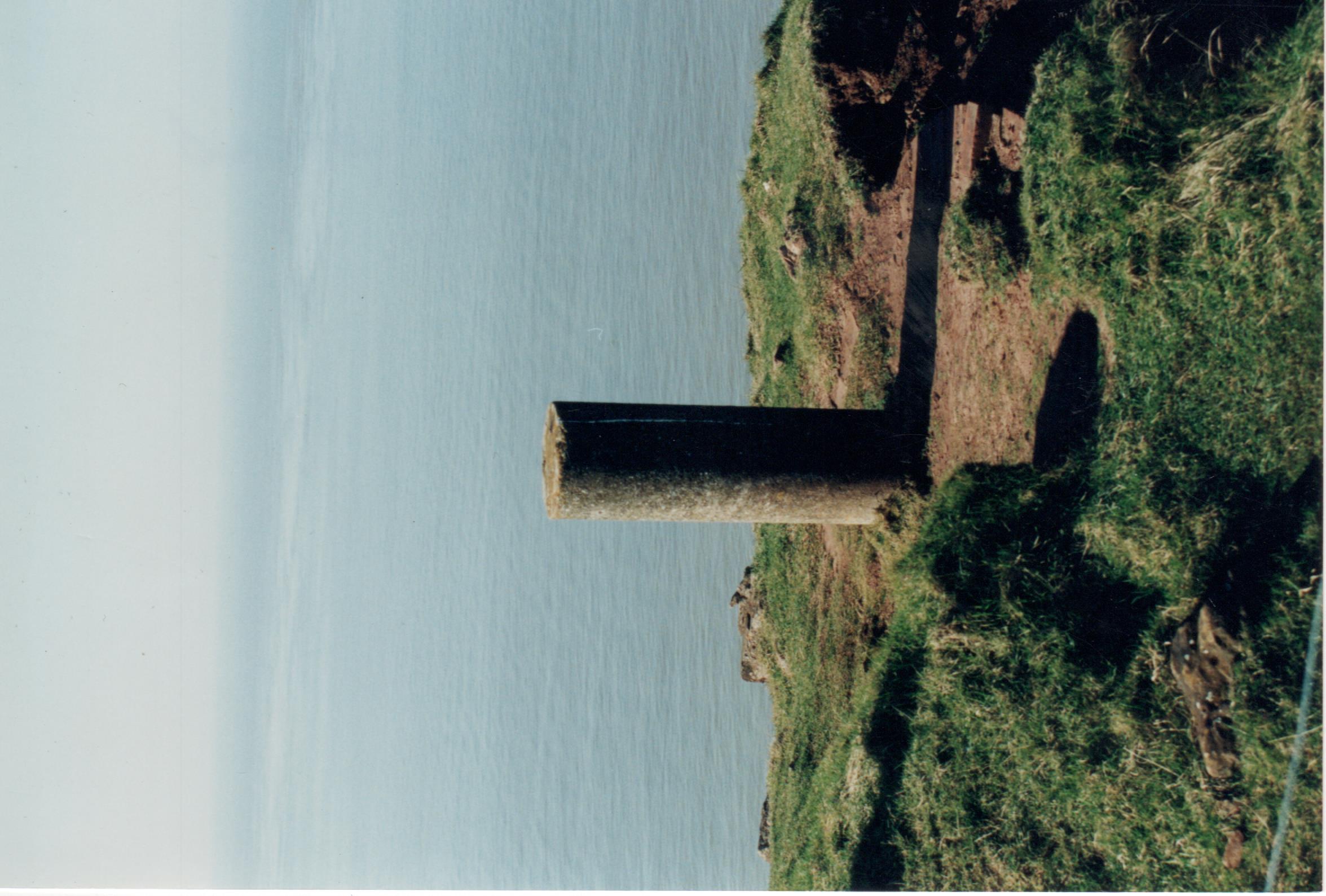
June 1900 – The normal garrison of the fort was augmented by a number of men who had been drafted to Brean Down from the Forts on Flat Holm and Steep Holm.
5 July 1900 5 am a magazine explosion at the fort caused the death of one soldier, Gunner William Haines, on detached duty from Flat Holm, who was responsible for the explosion with a well-directed shot into a No 3 magazine holding 5000 lbs of powder. The magazine and the wall separating the fort from the moat in the S.W. corner were demolished.
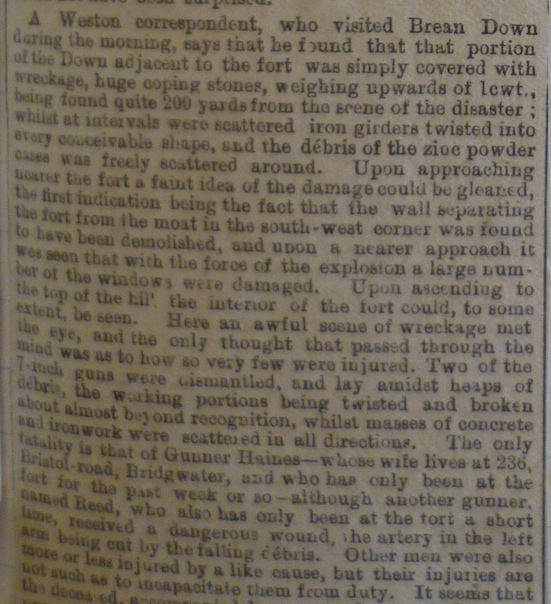
8 July 1900 the inquest by coroner Dr Craddock, at the Wellington Hotel, Berrow gave the following verdict. ‘‘ That Gunner Haines was killed by Magazine No 3 exploding, which explosion was caused by the deceased firing a carbine loaded with a ball cartridge down the shaft of the ventilator, whilst in a state of temporary insanity’’
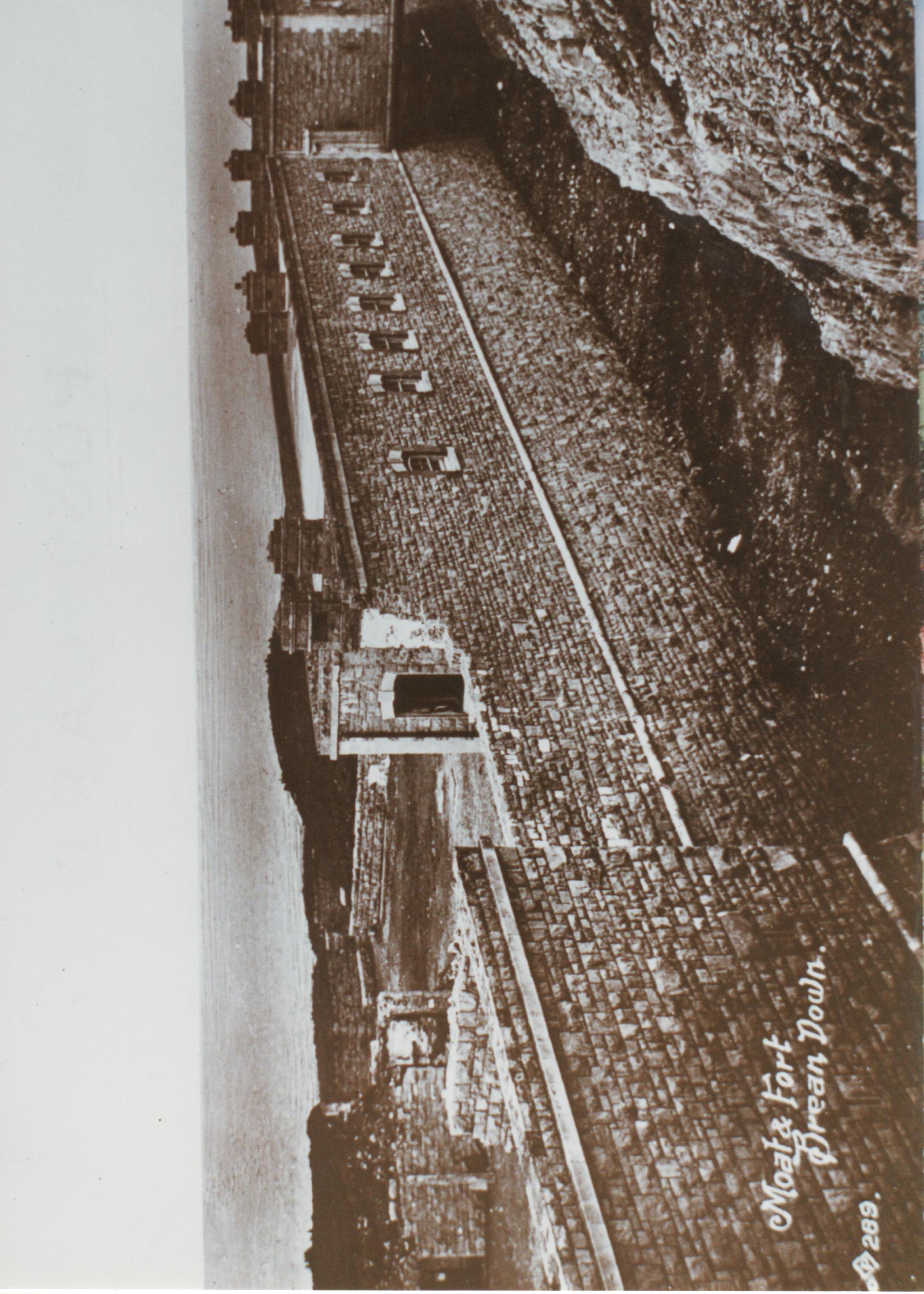
Following this disaster, the war Office closed down the Fort and the guns were removed to Woolwich Arsenal.
During the early years of the 20th century the fort was already a visitor attraction:
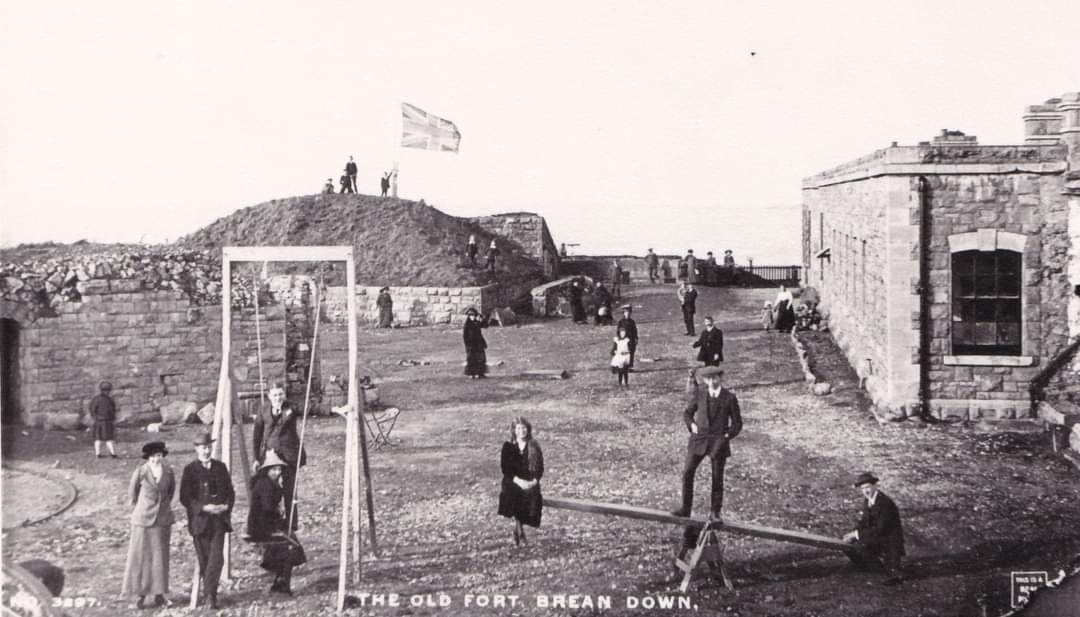
1939 to 1945 Brean Down fort was again re-armed with two six –inch Naval Guns brought from Cardiff. 571 Regiment, Coast Artillery, Western Command garrisoned the fort. The placements for the two guns were built by the Pioneer Corps prior to the arrival of the Artillery. They also had two searchlight batteries mounted low down on the rocks, enabling them to sweep the surface of the sea. A Battery observation post was built into the bank facing down the Channel. A maximum of 120 men under 3 officers and N.C. O. s were stationed there. Nissen Huts were built for accommodation, three in the ditch of the old fort and a number in the old quarry behind the fort.
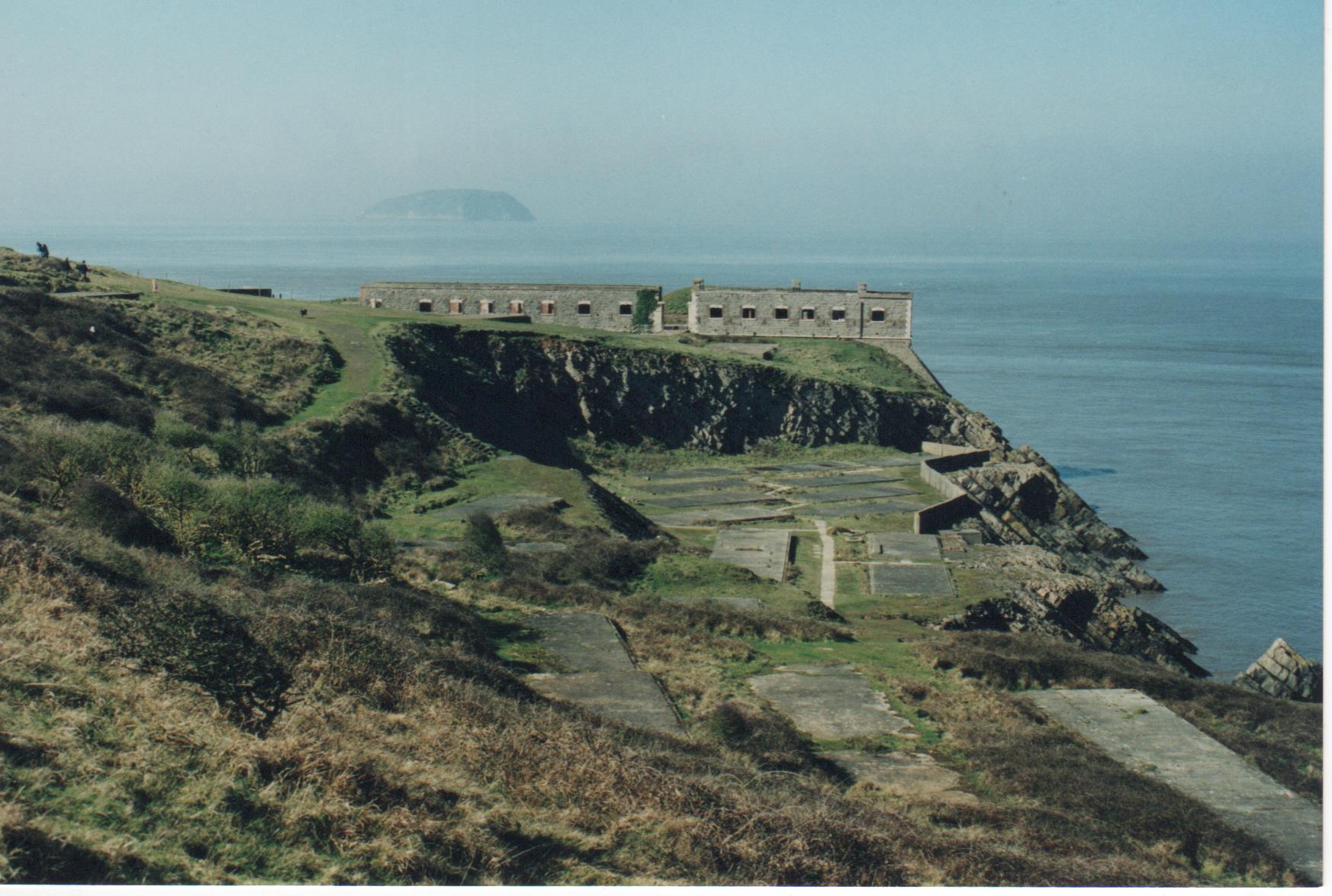
With the formation of Local Defence Volunteers in 1940 the Fort was used as an observation point by the local platoon. In 1941 the Admiralty established Severn Fixed Defence to protect Bristol and Severn Estuary anchorage for transatlantic convoys that the four forts were instructed for repair. Two ex-navel 6 inch guns remained until 1944 and on disbandment being handed over to Berrow and Brean Home Guard Platoon, finally being dismantled by German and Italian prisoners of war.
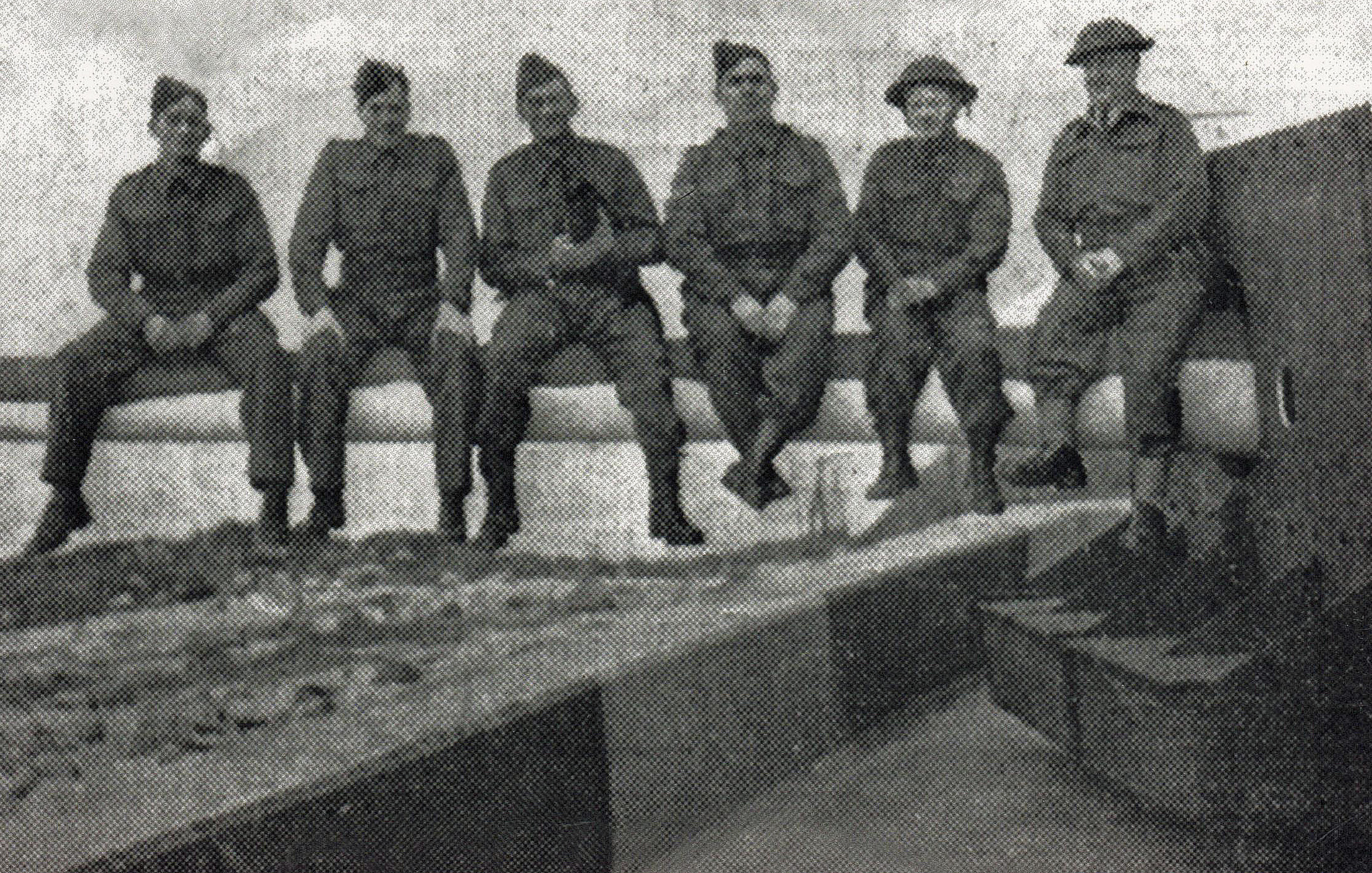
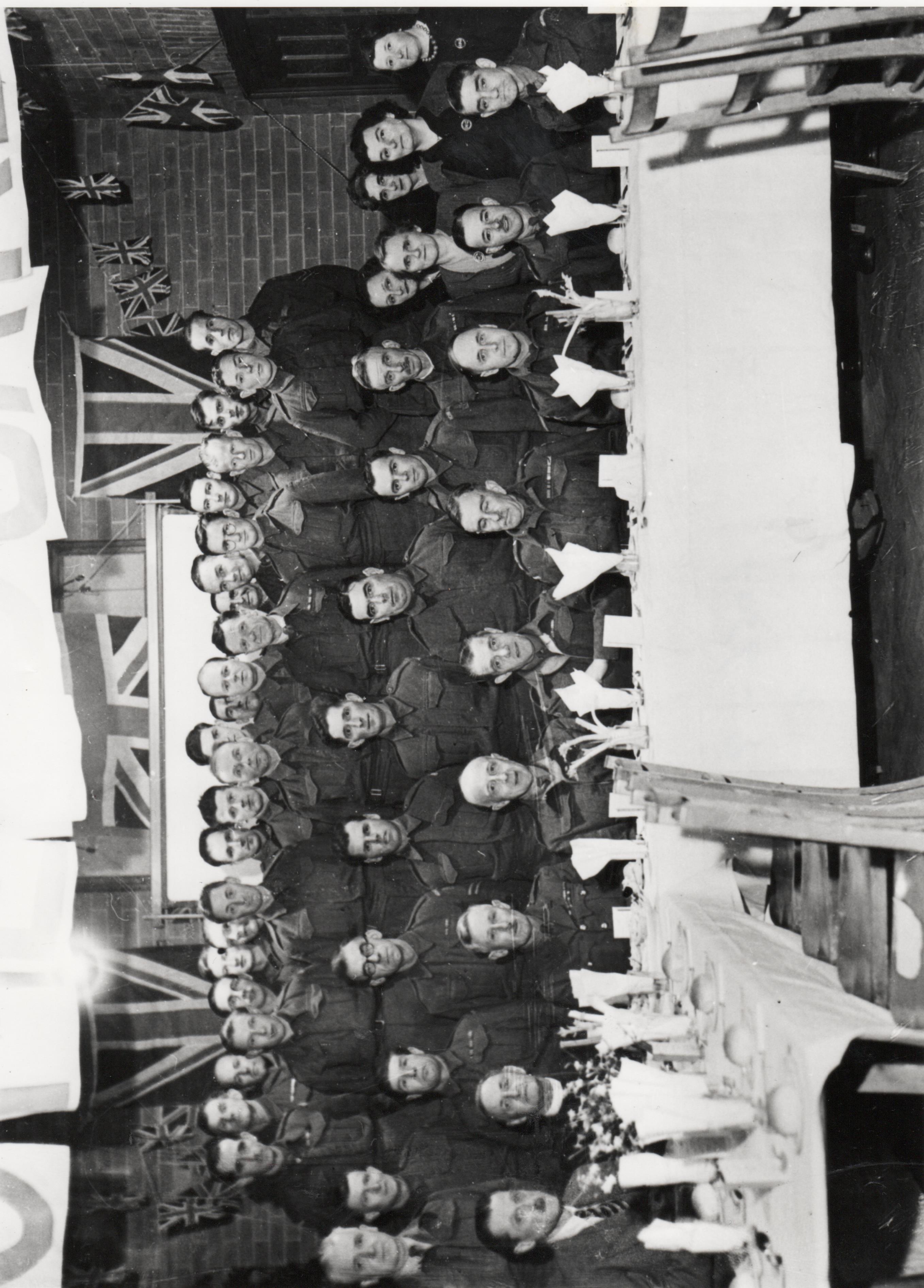
Some of the names of people attending the supper are: Dr Peter Holmes, Arthur Dunn, Bert Browning, Ted Brawn, Fred Cann, Percy Phelps, Stan Ward, Charlie Cox, Ralph Litton. (Apologies for any inaccuracies as original document was fogged and if you can help in identifying others please get in touch).
Throughout the war Brean Down was used by the Department of Miscellaneous Weapons Development of the Admiralty, based at H.M.S. Birnbeck (Birnbeck Pier, Weston). Many unusual experiments were conducted by the staff of H.M.S. Birnbeck under the command of Vice Admiral Casement. One of these trials was for a device known as the ‘‘Expendable Noisemaker’’ designed to foil enemy acoustic torpedoes. It was fired from a mortar, and on sinking below the surface it caused a series of rhythmic detonations. Its flight was erratic, and on one trial it flew perfectly out to sea for several hundred yards, and then suddenly shot off at right angles to its original course, disappeared inland at a high speed and exploded in the distance near a farm, landing, unfortunately in a chicken run, from which an irate farmer emerged.
Perhaps the most spectacular trials concerned the development of a naval version of Dr. Barnes Wallis’s dam-buster bombs, which were to be fired horizontally from motor-torpedo boats. The bomb was mounted on a rocket – propelled trolley with two rams on the front, designed to enter hydraulic cylinders acting as a buffer at the end of the runway. The trolley would stop dead whilst the missile hurtled on its course. A stretch of the headland was levelled and the runway, which is still extant, was built with a wall of cement–filled sandbags to reinforce the hydraulic stopping gear. When the firing key was pressed, the trolley, enveloped in flames, hurtled down the track, drove straight through the buffers and disintegrated the blast wall. The rocket carried the trolley well out to sea.
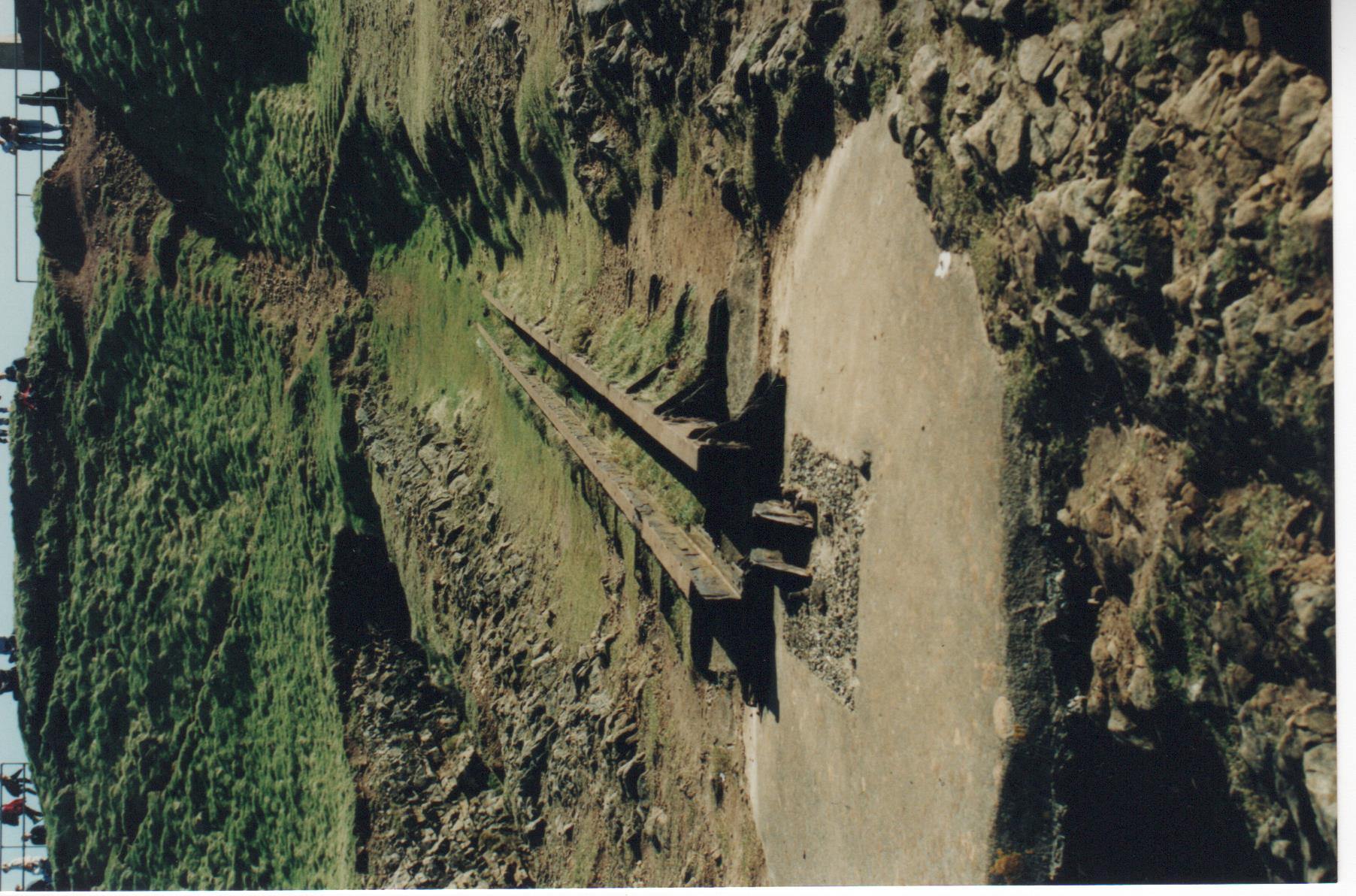

Can you help us with this last photograph?
What was the building seen in poor condition in the back ground used for? Was the stoned structure near the beach and the large cut square rock part of the Harbour work or Fort ?
We are grateful to Mr D.W.R. Thackeray and also Mr Nick van der Bijl, BEM. for supplying this information. More details can be found in Mr van der Bijl’s publication about the history of the Fort.
4. BREAN SANDS HOLIDAY RESORT
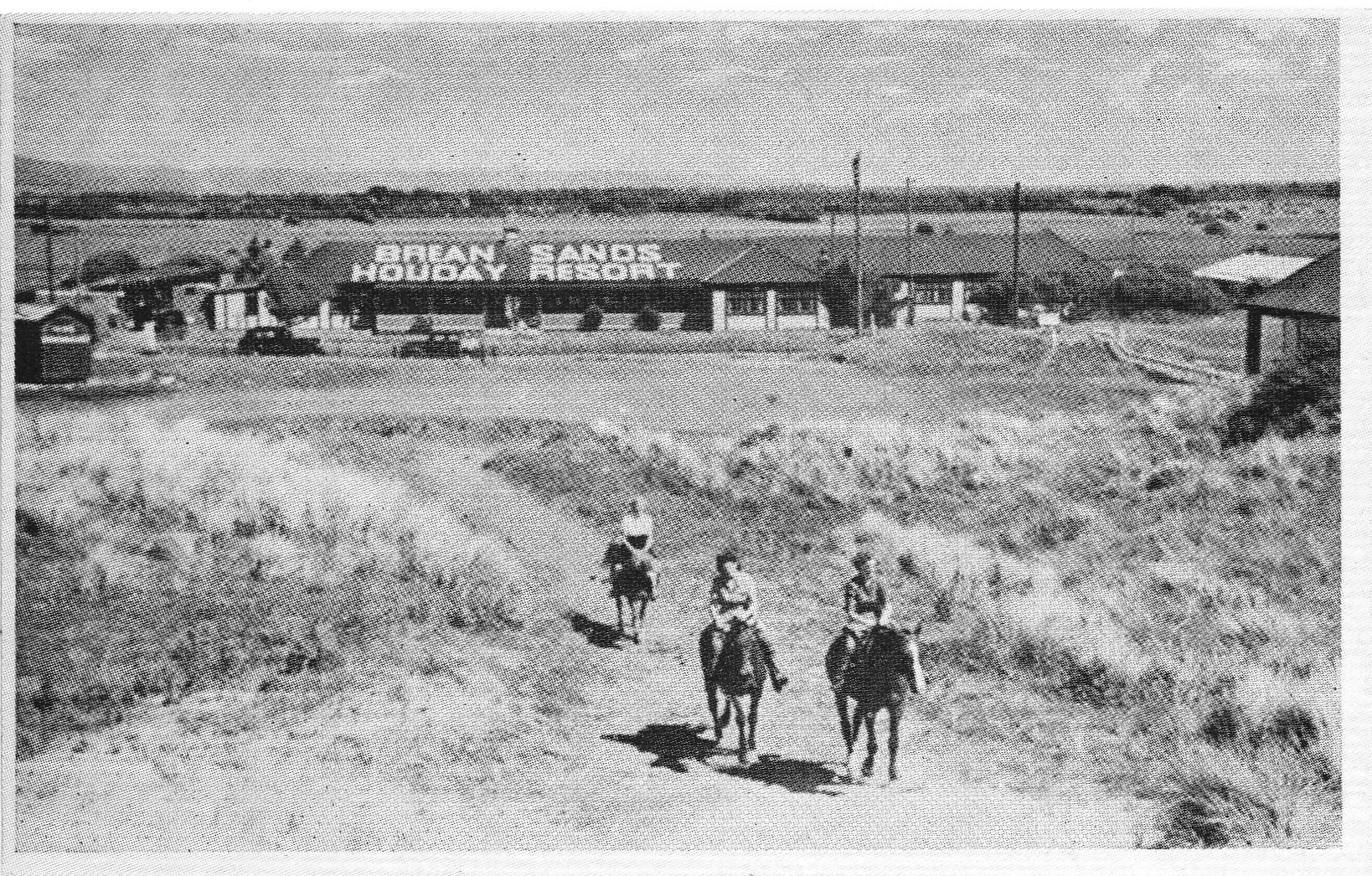
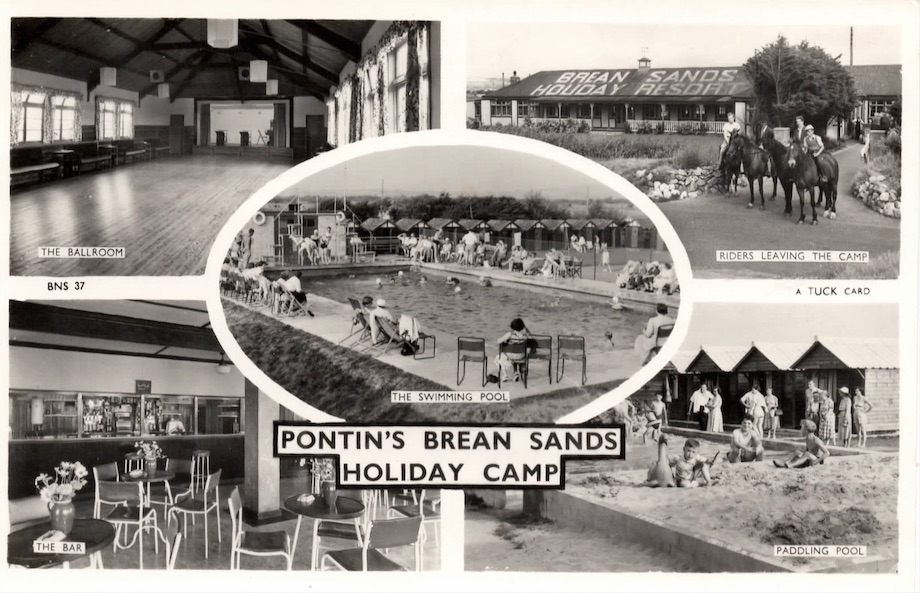
Brean Sands Holiday Camp was first known as ‘Dean’s’. Holiday makers arriving in Burnham by train were bussed by Gratton’s, Harding’s and Burnell’s coach companies. The camp was regularly patronised by parties of workers from a number of large companies (Wills Tobacco, Harris’s Sausages of Colne, Frys of Keynsham and Spiers of Bath). At one time the camp was the major single user of water from the Berrow Water Company, an independent farmers’ co-operative, and so paid 50% of the cost. The camp was used by the military during World War 2. It subsequently became Fred Pontin’s first camp. Much of the land on the seaward side of the coast road was never purchased, people erected wooden bungalows or holiday chalets and fenced in the land and after 12 years could claim statutory squatter’s rights. (information from notes by Evan Strickland)

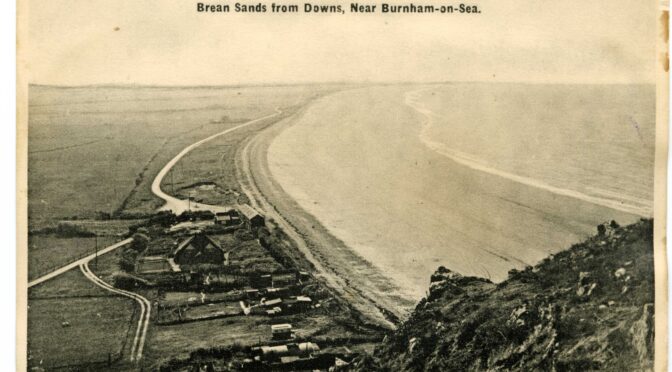
When I worked at Pontins in the 80s there was one of the original holiday camp huts remaining, shown bottom right on the postcard above, it was being used as the gardeners tea break hut, it’s probably long gone now unfortunately.
My late Mother also worked there in the 60’s and used to take me to work when I was a toddler, I have a picture somewhere of Fred Pontin arriving by helicopter
Thanks for your comment Colin. If you ever find the picture and can scan it it would be good to have it on our web page, so let us know.
I visited Brean and the Down recently and very much enjoyed walking on both. As a child of the ’60’s and from Bristol, the visit brought back many happy memories .
Thanks for your comment David.
Hello Ali,
Thanks for your kind words. They are much appreciated. If you come to Burnham you might like to visit our Heritage Trail which can be downloaded from this website or the Tourists Information Centre has free pamphlets ,
John
A fascinating insight and potted history. We came down the other day for a stroll from Clevedon. The change in use to a film set on that particular day was quite a change from previous incarnations. A super resource. Thank you,